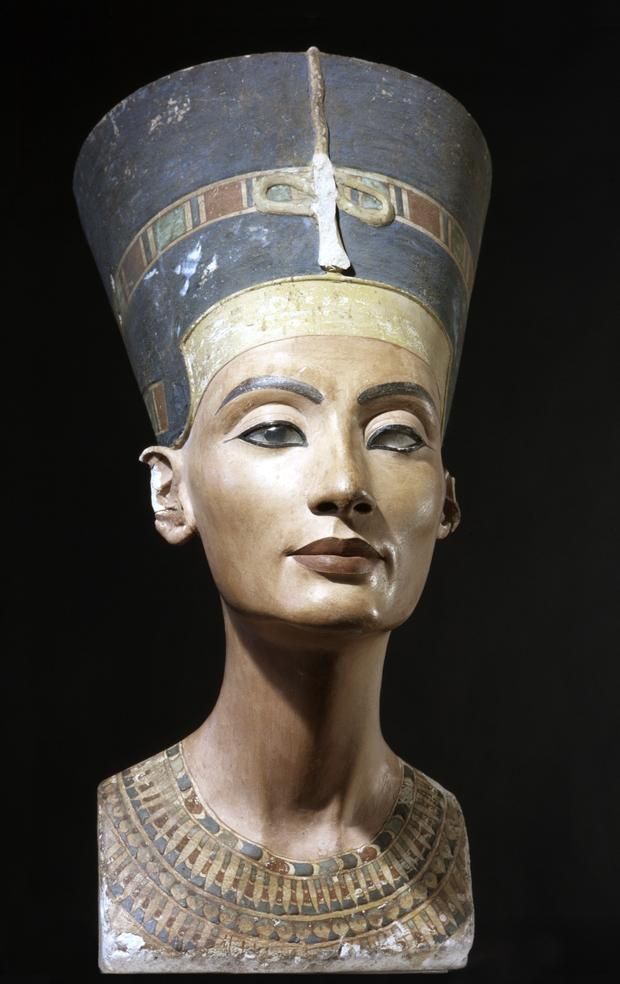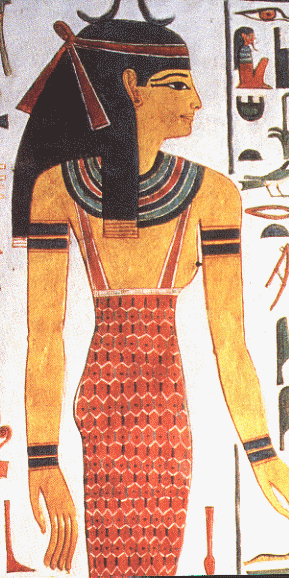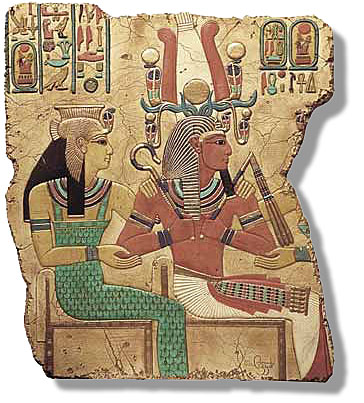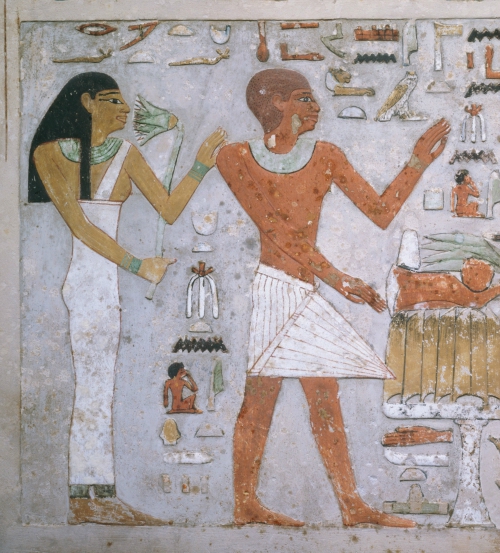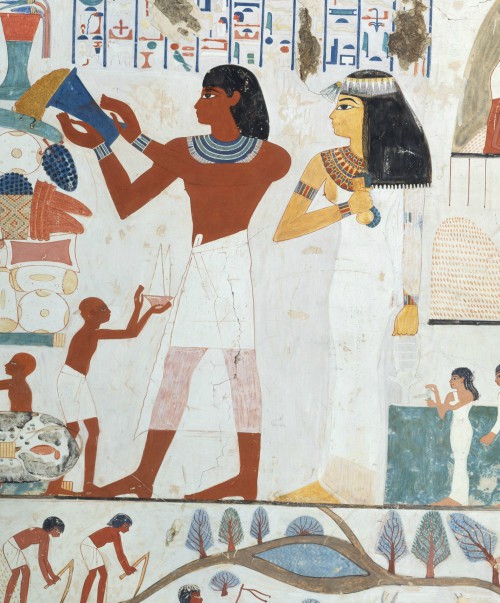It looks like you're using an Ad Blocker.
Please white-list or disable AboveTopSecret.com in your ad-blocking tool.
Thank you.
Some features of ATS will be disabled while you continue to use an ad-blocker.
share:
originally posted by: Byrd
originally posted by: Spider879
originally posted by: zinc12
originally posted by: Spider879
originally posted by: zinc12
Probably an attempt to make herself look like earlier Egyptians I would have thought, she knew she was like a duck out of water.
How so; what did earlier Kemetians looked like.
"Kemetians" what are you talking about, you mean Egyptians...plenty of ancient wall art so no need to ponder.
Yes the name they called their country and themselves, they would look at you funny if you called them Egyptians as that was a Greek word for one of their chief god Ptah. don't take my word for it.
Old English Egipte "the Egyptians," from French Egypte, from Greek Aigyptos "the river Nile, Egypt," from Amarna Hikuptah, corresponding to Egyptian Ha(t)-ka-ptah "temple of the soul of Ptah," the creative god associated with Memphis, the ancient city of Egypt. Strictly one of the names of Memphis, it was taken by the Greeks as the name of the whole country. The Egyptian name, Kemet, means "black country," possibly in reference to the rich delta soil. The Arabic is Misr, which is derived from Mizraim, the name of a son of Biblical Ham.
www.etymonline.com...
And Ham was etymologically connected to the Hebrew or Semitic rendering of the Kemetian, Khem or Kam meaning Black, used through out their religo/mythology as a group of supposedly related people due to their blackness.
The entry is incorrect -- "ha(t)-ka-ptah" was never the name of Amarna (the city of Akenaten) and the Arabic derivative ("name of a son of Ham") is a false connection. "Temple of Ptah" was applied to the whole of Egypt, and Misr is simply the word for "country." www.touregypt.net...
(edited to add that we know for dead certain that Amarna was NEVER "Temple of Ptah" because it was a new city in the middle of nowhere, started by Akhenaten (who destroyed all the gods that might rival his Aten-god) and abandoned within 10 years of his death.)
Not Amarna , Memphis that's where the Greeks made their name for the city that housed the God Ptah it was they that applied the term to the entire country.
And the Hebrew word cham for hot, heat , blackened, from which we derived Chemistry think of your bunsen burner in science lab , that "Ham" correspond to "Khem"supported by the fact that they are from the same super language family , Afrasian or Afro-Asiatic.
The Arabic Misr could have had multi sources the most familiar is the religo/mythological descendant grand son of Noah with all those begots, another could have been an actual Kemitian term
Also some people say MISR comes from an ancient term, Mizraim which may have itself been derived from an ancient Egyptian word, md-r mdr , which people in the region called Egypt.
egyptianchronicles.blogspot.jp...
You did understand me correctly -- both the mummies and the skeletal remains show that the Egyptians who lived in and around the Nile Delta and down towards Thebes were lighter skinned and generally looked like the Babylonians/Sumerians/other folks around the Mediterranean
This is what I am talking about, and something I myself had to rethink sometime time ago, and while some may bare resemblance to "some" west Asians, they are not, for these folks still carried a Tropical body plan not seen in areas outside Africa without being relative new comers regardless of what they looked like in terms of head shapes and even coloration.
"Kemetians" as far as I know is a completely modern word used by deluded African Americans whilst referring to themselves.
Khemet on the other hand is an ancient word for Egypt and refers to the black fertile soil deposited by the Nile river.
Afrocentric's like to use this word and infer that it was the"black land" in that it was populated by black people.
These same people devote much time to thumbing through thousands of images of ancient Egyptians ignoring how they depict themselves 99% of the time and instead put forward the exception as though it was the rule.
Khemet on the other hand is an ancient word for Egypt and refers to the black fertile soil deposited by the Nile river.
Afrocentric's like to use this word and infer that it was the"black land" in that it was populated by black people.
These same people devote much time to thumbing through thousands of images of ancient Egyptians ignoring how they depict themselves 99% of the time and instead put forward the exception as though it was the rule.
a reply to: Spider879
Uhm... not to appear unreasonable, but do you have a printed source for whatever the video's about? I don't have time for videos (I read at an unusually fast rate; roughly 5 times normal speaking speed (600+ wpm reading rate).)
I'm particularly interested in skeletal evidence; artistic evidence is culturally based.
And "chemistry" comes from al-kema, which doesn't have anything to do with being black. The ties to its being Egyptian go back to the greatly discounted Budge (I have his books and have scribbled a lot of corrections in them... eventually giving up that practice because there were so many things that were wrong.)
Ham's son would have had to been named after Egypt was ... well, Egypt. The name Misir goes back to before 1300 BC. en.wikipedia.org...
Uhm... not to appear unreasonable, but do you have a printed source for whatever the video's about? I don't have time for videos (I read at an unusually fast rate; roughly 5 times normal speaking speed (600+ wpm reading rate).)
I'm particularly interested in skeletal evidence; artistic evidence is culturally based.
And "chemistry" comes from al-kema, which doesn't have anything to do with being black. The ties to its being Egyptian go back to the greatly discounted Budge (I have his books and have scribbled a lot of corrections in them... eventually giving up that practice because there were so many things that were wrong.)
Ham's son would have had to been named after Egypt was ... well, Egypt. The name Misir goes back to before 1300 BC. en.wikipedia.org...
a reply to: Byrd
In no way are you being unreasonable , just that the vid lecture was easier to access.
In no way are you being unreasonable , just that the vid lecture was easier to access.
There has been scholarly interest in the biological variation and genealogical relationship of the ancient Egyptians to other populations outside of the Egyptian Nile Valley. There is no scientific reason to believe that the primary ancestors of the Egyptian population emerged and evolved outside of northeast Africa. Skeletal analyses have figured prominently in research. When comparisons to non-Egyptians are made, depending on which samples and methods are used, the craniofacial patterns of ancient Egyptian show a range of similarities to other African populations, Near Easterners, and Europeans. Overall, these studies can be interpreted as suggesting that the Egyptian Nile Valley's indigenous population had a craniofacial pattern that evolved and emerged in northeastern Africa, whose geography in relationship to climate largely explains the variation. Dental affinity studies generally agree with the craniofacial results, though they differ in the details.
The body proportions of ancient Egyptians generally are similar to those of tropical (more southern) Africans. Very little DNA has been retrieved from ancient Egyptian remains, and there are not many studies on the modern population. However, the results of analyses of mitochondrial DNA (mtDNA) and the Y chromosome in the living Egyptian population show the existence of very old African lineages that are consistent with the fossil remains and of younger lineages of more recent evolution, along with evidence of the assimilation of later migrants from the Near East and Europe; mtDNA is passed only through the female line, from mother to offspring, and the relevant part of the Y chromosome, the nonrecombining section, passes only from father to son. The basic overall genetic profile of the modern population is consistent with the diversity of ancient populations that would have been indigenous to northeastern Africa and subject to the range of evolutionary influences over time, although researchers vary in the details of their explanations of those influences.
ngm.nationalgeographic.com...
In thailand and other asian countries light skin is a sign of wealth. If you have light skin its because your inside working. If you have dark skin
its because you work outside (farmer) my friend was refused marrage to his long term girlfriend by the girls family, the only reason is because his
skin is darker.
Possibly same thing happens all that time ago?
Possibly same thing happens all that time ago?
a reply to: zinc12
No, no one is cherry picking here and being delusional?? nope, matter of fact we generally recognize the wide variation seen in Africa and African diaspora, it was I after all who wrote of the Red and Black Noba, and the Red and Black Igbos the Red Beni vs the Black Yoruba according to how they saw themselves,in other threads I post pics of Africans within shouting distance from each other with the same variations but all would recognize them as being non other than Africans.
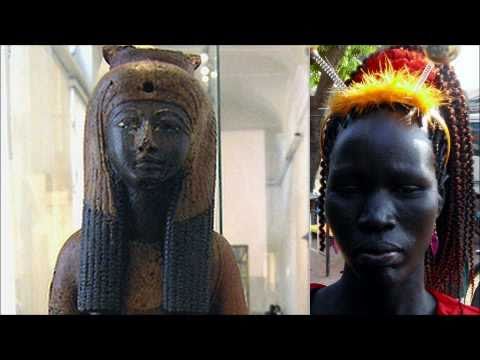

These ladies are all East Africans
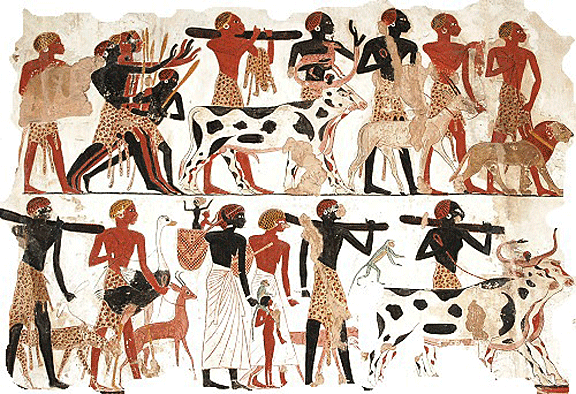
These are Nahasi traders more than likely Kush-ites
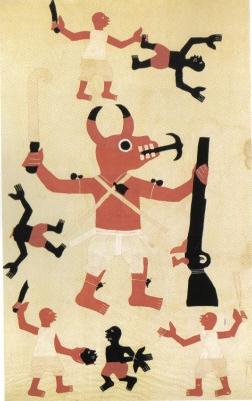
Red Beni vs Black Yoruba tropical west Africans.
These same people devote much time to thumbing through thousands of images of ancient Egyptians ignoring how they depict themselves 99% of the time and instead put forward the exception as though it was the rule.
No, no one is cherry picking here and being delusional?? nope, matter of fact we generally recognize the wide variation seen in Africa and African diaspora, it was I after all who wrote of the Red and Black Noba, and the Red and Black Igbos the Red Beni vs the Black Yoruba according to how they saw themselves,in other threads I post pics of Africans within shouting distance from each other with the same variations but all would recognize them as being non other than Africans.


These ladies are all East Africans

These are Nahasi traders more than likely Kush-ites

Red Beni vs Black Yoruba tropical west Africans.
edit on 28-6-2016 by Spider879 because: (no reason given)
originally posted by: Spider879
a reply to: Byrd
In no way are you being unreasonable , just that the vid lecture was easier to access.
So I see. The NatGeo site seems to be subscription.
In any case...
The basic overall genetic profile of the modern population is consistent with the diversity of ancient populations that would have been indigenous to northeastern Africa and subject to the range of evolutionary influences over time, although researchers vary in the details of their explanations of those influences.
ngm.nationalgeographic.com...
...which is pretty much what I was saying - not the darkest skinned sub-Saharans but a lighter skin and Mediterranean admixture.
originally posted by: zinc12
a reply to: Spider879
Not cherry picking and yet your photos don't look anything like the average Egyptian modern or ancient.
The above was meant to show skin tones known across Africa as Red and Black , and may have been a carry over into modern African diasporian usages of the term Red Bone., and the fact that such tones while spread unevenly were not unknown to each either on the Nile or the Niger that's my point, they were/are all native Africans and related to one another hence the lady in question was no duck out of water.
edit on 28-6-2016 by Spider879 because: (no reason given)
originally posted by: Byrd
originally posted by: Spider879
a reply to: Byrd
In no way are you being unreasonable , just that the vid lecture was easier to access.
So I see. The NatGeo site seems to be subscription.
In any case...
The basic overall genetic profile of the modern population is consistent with the diversity of ancient populations that would have been indigenous to northeastern Africa and subject to the range of evolutionary influences over time, although researchers vary in the details of their explanations of those influences.
ngm.nationalgeographic.com...
...which is pretty much what I was saying - not the darkest skinned sub-Saharans but a lighter skin and Mediterranean admixture.
Well we know that outside influence did occur how could it not , but the overall bias was toward inner Africa hence they retained largely tropical body plans, other folks outside but still Meds, are generally cold adapted regardless of what they looked like.
a reply to: zinc12
I don't, reread my previous posts , and btw that particular sculpture of Nefertiti is probably a fake
As to the rest of the pic, as I said before my point was that the lady in question would be no duck out of water and other Africans were painted in the exact same colors separated by time and space , those pics looked to my eyes like many a native Africans, and exactly how she would have been painted on a wall is not really known she could have been represented as brownish, yellowish or even like Kemsit of the 12th dyn, but what we do know is the 11th,12th, 17th and 18th dyn had deep southern roots the last of which she belonged to.
I don't, reread my previous posts , and btw that particular sculpture of Nefertiti is probably a fake
According to a Swiss art historian, the bust is less than 100 years old. Henri Stierlin has said the stunning work that will later this year be the showpiece of the city's reborn Neues Museum was created by an artist commissioned by Ludwig Borchardt, the German archaeologist credited with digging Nefertiti out of the sands of the ancient settlement of Amarna, 90 miles south of Cairo, in 1912. In his book, Le Buste de Nefertiti – une Imposture de l'Egyptologie? (The Bust of Nefertiti – an Egyptology Fraud?), Stierlin has claimed that the bust was created to test ancient pigments. But after it was admired by a Prussian prince, Johann Georg, who was beguiled by Nefertiti's beauty, Borchardt, said Stierlin, "didn't have the nerve to make his guest look stupid" and pretended it was genuine. Berlin author and historian Edrogan Ercivan has added his weight to the row with his book Missing Link in Archaeology, published last week, in which he has also called Nefertiti a fake, modelled by an artist on Borchardt's statuesque wife
www.theguardian.com... 7/nefertiti-bust-berlin-egypt-authenticity
As to the rest of the pic, as I said before my point was that the lady in question would be no duck out of water and other Africans were painted in the exact same colors separated by time and space , those pics looked to my eyes like many a native Africans, and exactly how she would have been painted on a wall is not really known she could have been represented as brownish, yellowish or even like Kemsit of the 12th dyn, but what we do know is the 11th,12th, 17th and 18th dyn had deep southern roots the last of which she belonged to.
edit on 29-6-2016 by Spider879 because: (no
reason given)
All the pale skin has to do with is labor force vs pampered class.
If you have lighter skin in a town full of same-as-you-eqyptians, then that means you arent a manual laborer, but wealthy enough to spend your time in the cool shade. Same as fat people mean you're wealthy, not that fat people are physically more desirable.
To take it to the next level as if its concerning black vs white "race" is disingenuous.
If you have lighter skin in a town full of same-as-you-eqyptians, then that means you arent a manual laborer, but wealthy enough to spend your time in the cool shade. Same as fat people mean you're wealthy, not that fat people are physically more desirable.
To take it to the next level as if its concerning black vs white "race" is disingenuous.
originally posted by: Butterfinger
All the pale skin has to do with is labor force vs pampered class.
If you have lighter skin in a town full of same-as-you-eqyptians, then that means you arent a manual laborer, but wealthy enough to spend your time in the cool shade.
Not actually true. In Nubia, the nobles would have been darker skinned and the peasants and traders would have been lighter skinned.
a reply to: Byrd
Just speculation, here, (and excuse me if this was already mentioned) but I wonder if this was a way to emulate a higher class of woman or human who, due to possibly not needing to be out in the sun as much, therefore not getting as dark a skin tone from reaction to the sun's rays.
Maybe.
Maybe?
Meh.
Just speculation, here, (and excuse me if this was already mentioned) but I wonder if this was a way to emulate a higher class of woman or human who, due to possibly not needing to be out in the sun as much, therefore not getting as dark a skin tone from reaction to the sun's rays.
Maybe.
Maybe?
Meh.
a reply to: Xaphan
I think you may have misunderstood. It is an anthropological fact that within genetically similar (and, usually, geographically contiguous) human populations, women are, on average, fairer-skinned than men.
Concerning your sexual preferences: I am from a former European colony, and I can testify — from the evidence I see about me — that it is and was quite common. It’s irrelevant, though.
I think you may have misunderstood. It is an anthropological fact that within genetically similar (and, usually, geographically contiguous) human populations, women are, on average, fairer-skinned than men.
Concerning your sexual preferences: I am from a former European colony, and I can testify — from the evidence I see about me — that it is and was quite common. It’s irrelevant, though.
a reply to: punkinworks10
Hi, punkinworks10. I have great respect for your contributions on historical, anthropological, archaeological and prehistoric subjects, and am honoured that you replied my post.
No, I am afraid this is not true at all. There is no direct survival or reproductive benefit to be gained by miscegenation. Even if there was, we could not have evolved to take advantage of it.
First, generally speaking: mixing genes passes on mutations. Mutations are most likely deleterious except in a few rare cases. The survival and reproductive advantages conferred on those few rare cases are far outweighed by the survival and reproductive disadvantages of deleterious mutations. It is true that the few rare advantageous combinations do then go on to dominate the mixed population, at least for a few generations, until the fellow-travelling genes are split up by recombinations.
Essentially, I believe, you end up mostly even. In any case, there is very little genetic variation among humans. If a population is very inbred and has all kinds of nasty hereditary malfunctions an infusion of fresh blood most certainly helps, but the donors have to carry the risk of mating with these sickly or otherwise selectively unfit partners.
Second, conceptually speaking, natural selection does not — cannot — take place on the level of populations. It occurs on the level of genes, or at the very least on the level of individual organisms.
Finally, there are other risks besides genetic ones associated with outcrossing. Social and status risks exist, as I am sure you know from your own family experience. Such dangers and disincentives would have been far greater among our primitive forebears.
I, too, am of extremely mixed parentage. And I’ve been lucky, so far, in the genetic lottery. But not all are necessarily so fortunate.
Hi, punkinworks10. I have great respect for your contributions on historical, anthropological, archaeological and prehistoric subjects, and am honoured that you replied my post.
It's evolutionary pressure, we are pre-programmed to be attracted to those who are most different from ourselves. It ensures a diverse gene pool.
No, I am afraid this is not true at all. There is no direct survival or reproductive benefit to be gained by miscegenation. Even if there was, we could not have evolved to take advantage of it.
First, generally speaking: mixing genes passes on mutations. Mutations are most likely deleterious except in a few rare cases. The survival and reproductive advantages conferred on those few rare cases are far outweighed by the survival and reproductive disadvantages of deleterious mutations. It is true that the few rare advantageous combinations do then go on to dominate the mixed population, at least for a few generations, until the fellow-travelling genes are split up by recombinations.
Essentially, I believe, you end up mostly even. In any case, there is very little genetic variation among humans. If a population is very inbred and has all kinds of nasty hereditary malfunctions an infusion of fresh blood most certainly helps, but the donors have to carry the risk of mating with these sickly or otherwise selectively unfit partners.
Second, conceptually speaking, natural selection does not — cannot — take place on the level of populations. It occurs on the level of genes, or at the very least on the level of individual organisms.
Finally, there are other risks besides genetic ones associated with outcrossing. Social and status risks exist, as I am sure you know from your own family experience. Such dangers and disincentives would have been far greater among our primitive forebears.
The idea is well illustrated here in the US, I'm a product of it a white mother and Filipino father, my Filipino cousins married white, Hispanic and black partners.
I, too, am of extremely mixed parentage. And I’ve been lucky, so far, in the genetic lottery. But not all are necessarily so fortunate.
edit on 2/7/16 by Astyanax because: lack of clarity.
new topics
-
Turns out, they planned to go after P-nut.
US Political Madness: 2 hours ago -
Sick sick sick
Social Issues and Civil Unrest: 8 hours ago -
Comcast dumping MSNBC
Mainstream News: 11 hours ago
top topics
-
Comcast dumping MSNBC
Mainstream News: 11 hours ago, 18 flags -
President-elect TRUMP Picks MATT GAETZ for his ATTORNEY GENERAL - High Level PANIC Ensues.
2024 Elections: 14 hours ago, 16 flags -
Turns out, they planned to go after P-nut.
US Political Madness: 2 hours ago, 8 flags -
Sick sick sick
Social Issues and Civil Unrest: 8 hours ago, 5 flags
active topics
-
The Acronym Game .. Pt.4
General Chit Chat • 948 • : Encia22 -
Sick sick sick
Social Issues and Civil Unrest • 36 • : andy06shake -
How can you defend yourself when the police will not tell you what you did?
Posse Comitatus • 75 • : angelchemuel -
Turns out, they planned to go after P-nut.
US Political Madness • 8 • : WeMustCare -
Comcast dumping MSNBC
Mainstream News • 16 • : LSU2018 -
President-elect TRUMP Picks MATT GAETZ for his ATTORNEY GENERAL - High Level PANIC Ensues.
2024 Elections • 53 • : WeMustCare -
Slap in the Face for Starmer - Trump Could / Should Block Chagos Islands Deal
Regional Politics • 5 • : gortex -
-@TH3WH17ERABB17- -Q- ---TIME TO SHOW THE WORLD--- -Part- --44--
Dissecting Disinformation • 3261 • : WeMustCare -
WATCH LIVE: US Congress hearing on UFOs, unidentified anomalous phenomena
Aliens and UFOs • 41 • : Dalamax -
Alex Jones Reinstated on X
Education and Media • 84 • : WeMustCare

